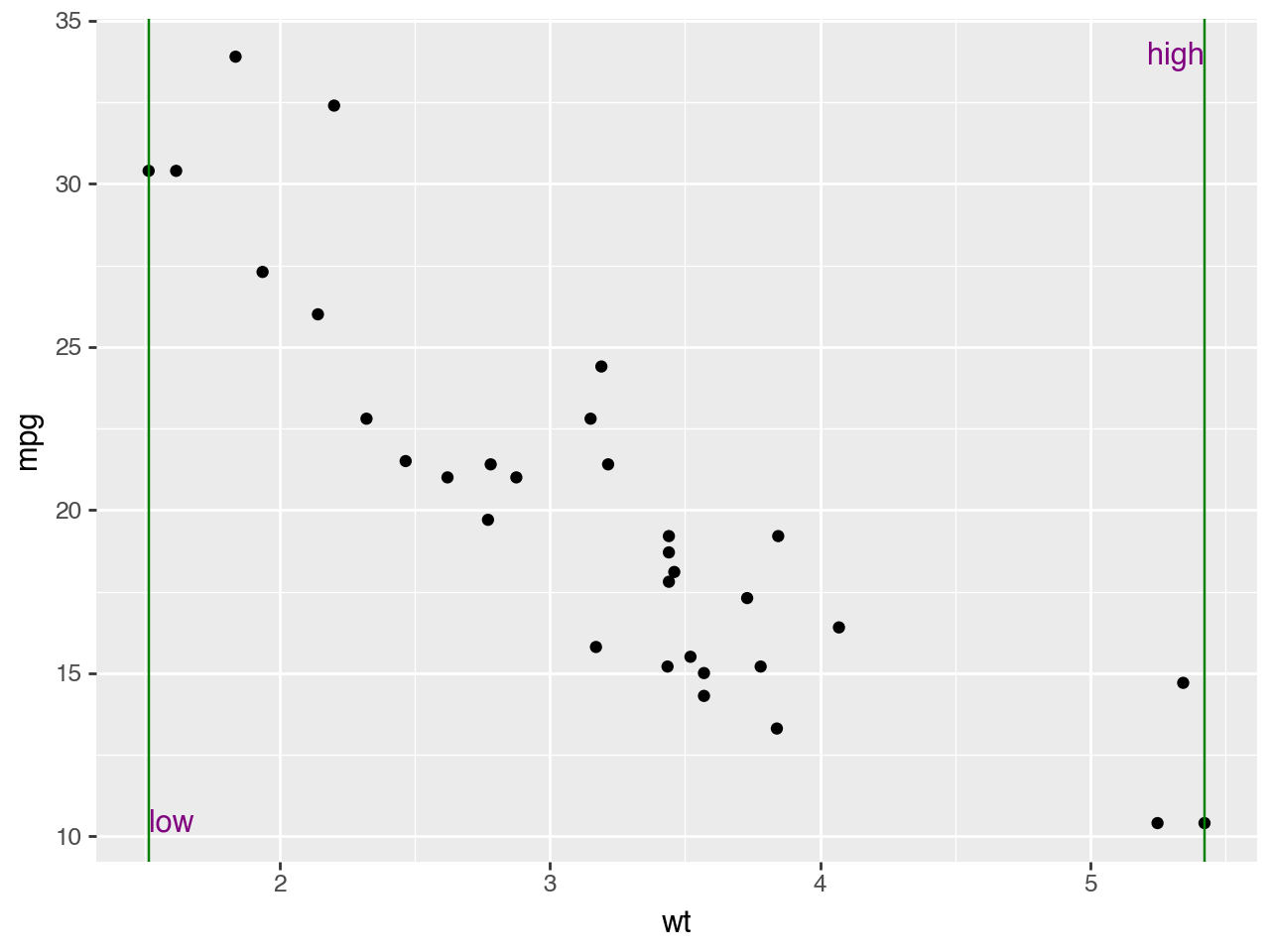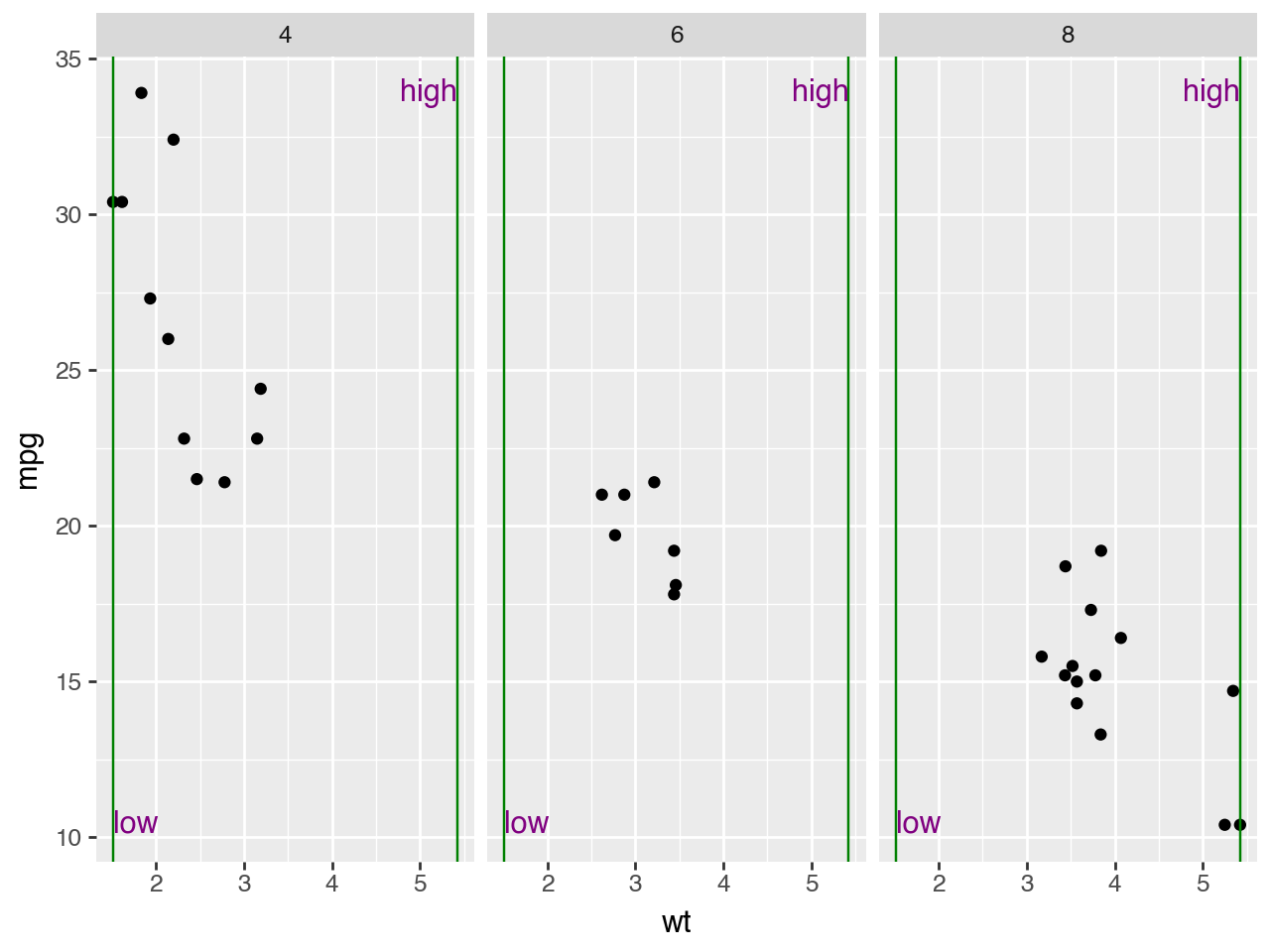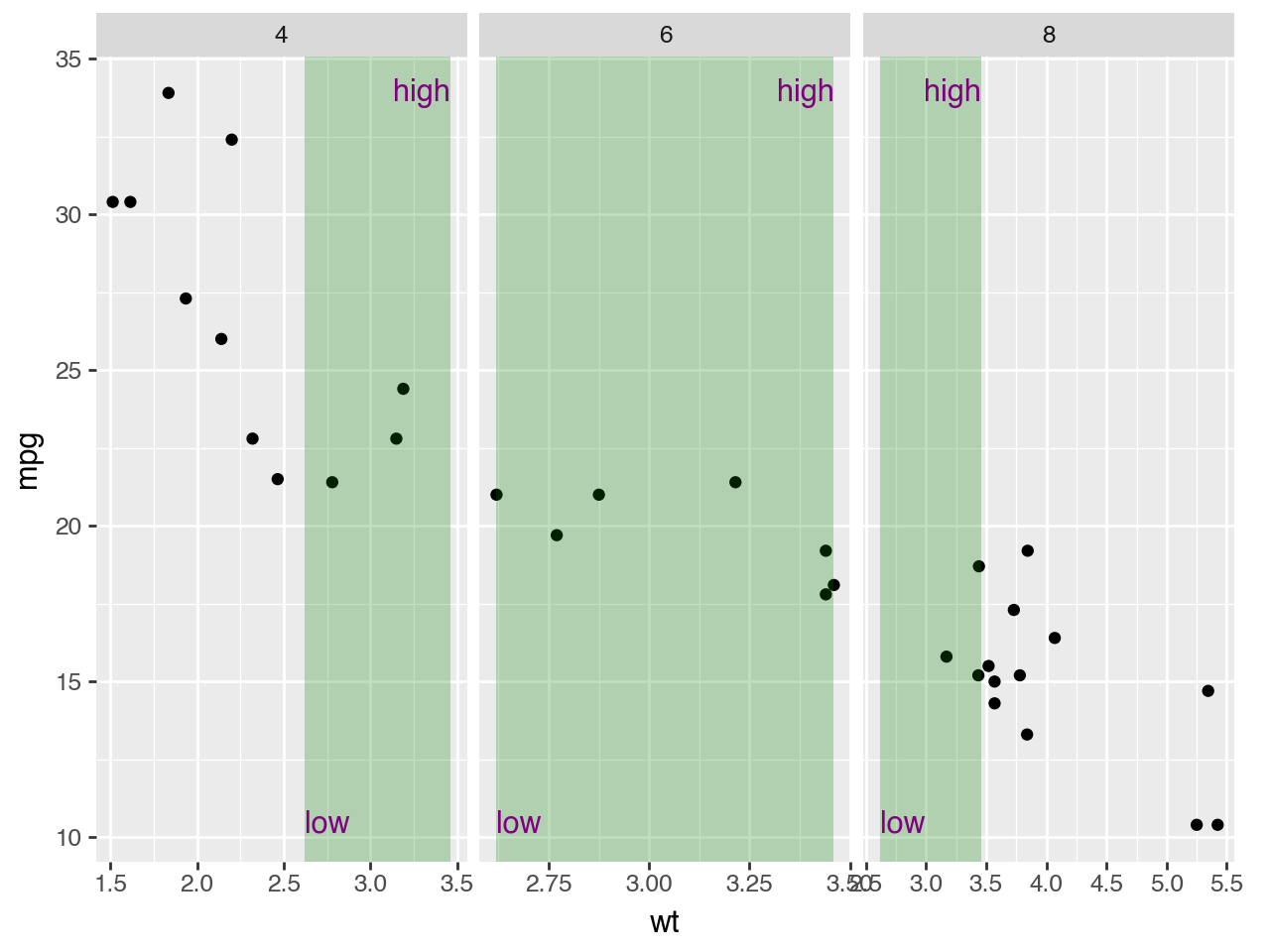get_aesthetic_limits(plot, ae)
Get the limits of an aesthetic
These are the limits before they are expanded.
Parameters
plot : ggplot-
ggplot object
ae : str-
Name of aesthetic
Examples
from plotnine import aes, annotate, facet_wrap, ggplot, geom_point
from plotnine.data import mtcars
from plotnine.helpers import get_aesthetic_limits
Here we create a plot, get the current limits and add annotations using the values of the limits.
p = (
ggplot(mtcars, aes("wt", "mpg"))
+ geom_point()
)
x_limits = get_aesthetic_limits(p, "x")
y_limits = get_aesthetic_limits(p, "y")
(
p
+ annotate("vline", xintercept=x_limits, color="green")
+ annotate("text", x=x_limits, y=y_limits, label=["low", "high"], ha=["left", "right"], color="purple")
)
We got the limits before facetting
(
p
+ annotate("vline", xintercept=x_limits, color="green")
+ annotate("text", x=x_limits, y=y_limits, label=["low", "high"], ha=["left", "right"], color="purple")
+ facet_wrap("cyl")
)
When we call the function facetting, we get list of limits with each panel.
p = (
ggplot(mtcars, aes("wt", "mpg"))
+ geom_point()
+ facet_wrap("cyl", scales="free_x")
)
x_limits_lst = get_aesthetic_limits(p, "x") # limits for 1st, 2nd & 3rd panel
x_limits = x_limits_lst[1] # limits of the 2nd panel
(
p
+ annotate(
"rect",
xmin=x_limits[0],
xmax=x_limits[1],
ymin=-float("inf"),
ymax=float("inf"),
fill="green",
alpha=.25
)
+ annotate("text", x=x_limits, y=y_limits, label=["low", "high"], ha=["left", "right"], color="purple")
)
Source: get_aesthetic_limits.ipynb


